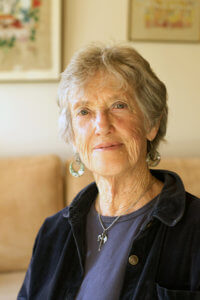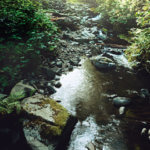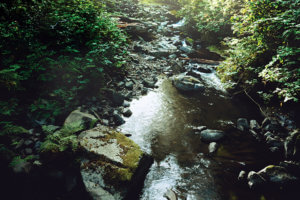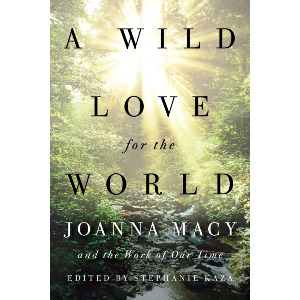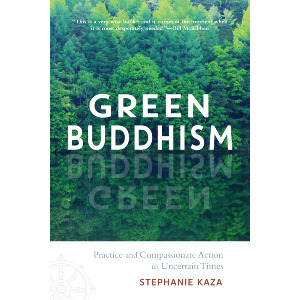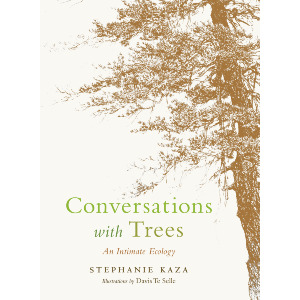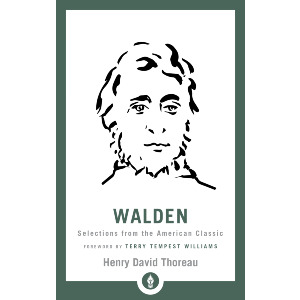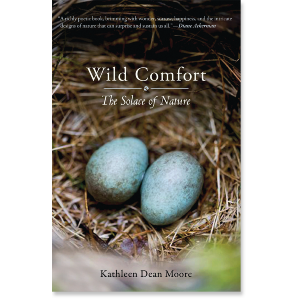In early 1985, I was offering workshops across Australia to activists resisting nuclear testing, uranium mining, and the logging of their last old-growth forests. They found that the Despair and Empowerment work freed them from burnout and kindled their love for one another. Communities around the world were welcoming these workshops, and meeting the forest activist John Seed was a milestone for me and the work. After his first workshop, John challenged me: “How can we adapt despair and empowerment work to free us from the notion that we humans are the crown of creation?”
That challenge increased both my awareness of the damage we humans had done to ourselves and our world and my appreciation for the gifts we would harvest by enlarging our identification with all life.
We had been out all morning, walking in the green-lit stillness of the primeval rainforest, with only birdcalls and water splashes breaking the silence. Now we were squatting on the bank of a pond a short distance from the vine-covered bus that served as John’s office for his rainforest activism around the Pacific Rim. Three years before we met, John’s life had been seized by a larger purpose when he found himself defending the Nightcap Range, a vestige of the great primordial rainforests of Gondwanaland, Australia’s mother continent.
As he described the confrontation, I could hear the screaming chainsaws, the crashing of trees as they fell, the police shouting on their megaphones at the protestors defending the trees. John and his crew were fighting for time. It was a holding action, waiting for an injunction to stop the logging. In the midst of the conflict, he and his mates stood there with nothing but their bodies between the loggers and the trees. He suddenly had an experience of knowing deeply and clearly who he really was.
“I felt rooted in all life, in the primordial cradle of existence.”
John’s story riveted my attention. Given the pace of industrial deforestation, it was clear that even if activists won every battle they waged, it would hardly make a dent. John saw this with total realism, yet he kept on giving his life to this work. “How do you deal with despair?” I asked him. And he said, “That week of the protest I had a realization of who I really was. It wasn’t John Seed protecting the rainforest; the rainforest was protecting herself through the humanity she had cradled into life.” Oh, of course! If we could feel the earth acting through us, if we could experience being held by a power greater than our own, it would change everything. We would feel graced.
The story was fresh in my mind as we sat by the pond in the forest, and John was challenging me once more to take the group work deeper. “How do we break free of our anthropocentrism?” he asked again. I remembered a book our family had enjoyed together when our kids were young. The Once and Future King by T. H. White was a retelling of the legend of King Arthur. At the hands of the wizard Merlin, Arthur received a most unusual education. Knowing that great responsibilities were in store for the boy, the wizard changed him for periods of time into various creatures—a falcon, an ant, a badger, a wild goose, a carp in the castle moat. As we read each of Arthur’s adventures in learning, they stretched our minds and enlarged our perceptions and perspectives beyond what we were accustomed to as humans.
Now, with John, I realized we were talking about the ecological self, a term we both knew from the Norwegian philosopher Arne Naess and the deep ecology movement he had launched. I had thought the term a helpful secular analogy for the Buddha’s teaching of dependent co-arising. The discovery of the term deep ecology excited me when I encountered it, striking me as relevant to the work I was using. But here, talking with John, I soon realized he took the human-centeredness of our culture more seriously than I had.
What would it take, we wondered, what kind of group work could move us beyond our narrow human self-interest?
We stripped and dove into the pond, shaking off the noon heat. John’s question turned in my mind as I swam down into the murky depths. Plunging into this other world, I became the carp in the castle moat, and Arthur’s story became mine.
As we emerged from the pond and dressed, the seed of an idea was taking shape in my mind. Rainforest, Merlin, carp came to me and gave me an answer—a Council of All Beings. In this council, people would step aside from their human identities and speak on behalf of other life forms. It would be a simply structured ritual, both playful and solemn, engaging our imagination and proceeding in stages, widening our understanding and deepening our commitment to life. Back and forth we riffed with mounting enthusiasm for this new form. I decided to give it a test run to see if such a ritual could actually work. “I’ll do it in the weeklong training near Sydney,” I said, referring to the final workshop before my departure for the States, “but you’ve got to promise to be there.”
It turned out to be easier than I expected. I simply invited the forty participants to let themselves be chosen by another life form. With cardboard, markers, paste, mud, and leaves, we made masks for our new identities. In slow procession, we followed the drum and didgeridoo to a wide gorge below a waterfall. Gathering in a circle on flat boulders, surrounded by water, trees, sun, and stone, each person called forth their being to the council.
Soon John and I found ourselves leading councils around the world, inspiring others to do the same. With the help of our colleague Pat Fleming and including a key chapter by Arne Naess, we published Thinking Like a Mountain: Toward a Council of All Beings.
For us and people around the world, the ritual has opened up dimensions of perception and motivation that John and I, that day beside the pond, could not have imagined.
Share
Related Books
$27.95 - Paperback
$18.95 - Paperback
$21.95 - Paperback
$14.95 - Paperback
$19.95 - Paperback
